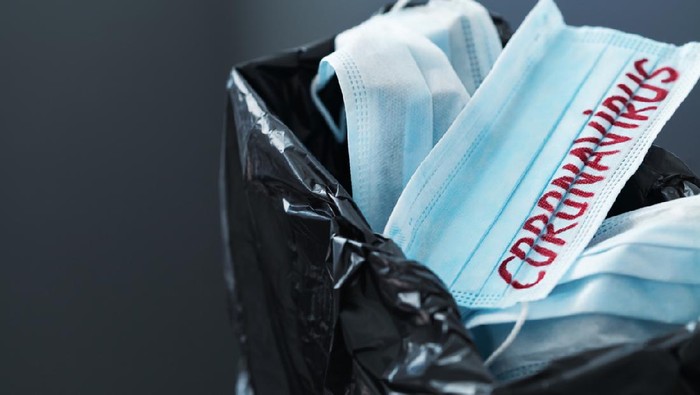Jakarta – As the number of COVID-19 cases is still increasing, an increase in medical waste can be a medium for virus transmission. As a result, disposal of this infectious waste cannot be done carelessly or combined with other household waste.
Deputy for Engineering Sciences at the Indonesian Institute of Sciences (LIPI) Dr. Agus Haryono, M.Sc. explained, based on recent research at the Cilincing and Marunda waste disposal points, the amount of waste increased by 5 percent after the pandemic. However, in terms of waste weight, it actually decreased by 25 percent.
This means that waste disposal has increased due to the ongoing pandemic. However, there is a change in activity so that the contents of the waste change. One of them, is now found mask waste and PPE at the waste disposal site.
“Since the COVID-19 pandemic in March, there are more and more trash masks. This is what LIPI researchers have observed, the pile of PPE waste that is disposed of carelessly. At the Cilincing estuary, Marunda found PPE waste made of plastic, “he said in the webinar” Don’t Throw Your Mask: Management of Mask Waste during the COVID-19 Pandemic “held by LIPI, Tuesday (16/2/2021).
He also mentioned that another problem with waste due to the COVID-19 pandemic is messy disposal and processing, both used community mask waste or medical waste from hospitals. What is dangerous is the risk of infectious waste in the environment.
“Now starting to find only PPE waste disposal that violates procedures, the rapid test equipment is dumped on the side of the road. Garbage from the city of Tangerang, where there is a hotel for quarantine, is dumped into another city. Then from the hospital it is also thrown into a landfill (TPA), “said Dr. Agus.In addition to disposing of medical waste according to procedures, households can take care of it first before disposing of mask waste. The trick is to separate the mask waste from other household waste. Place the mask trash in 1 container, let stand for 6 days before disposed of with other household waste. That way, the risk of infection from mask waste can be minimized.









